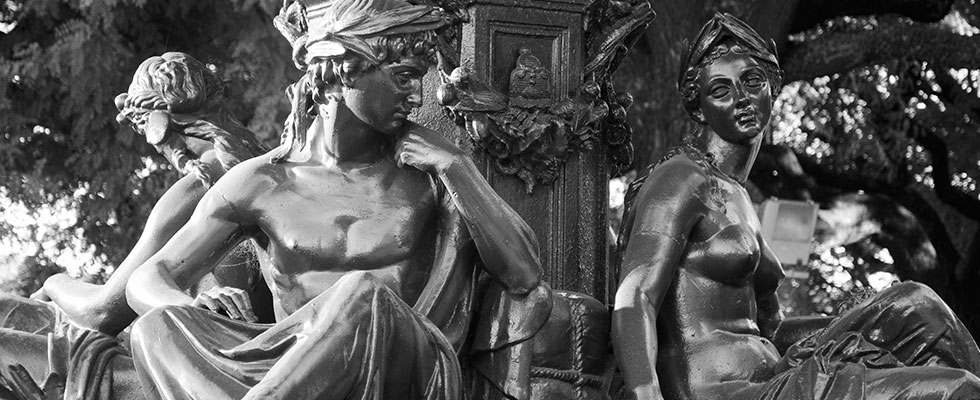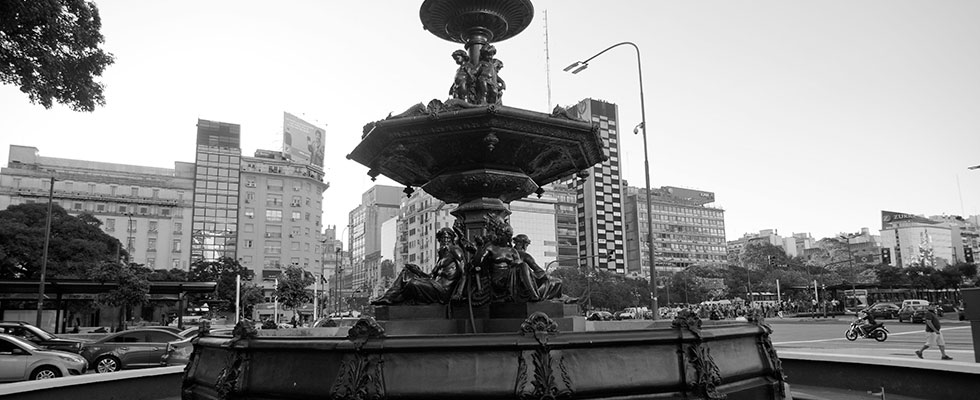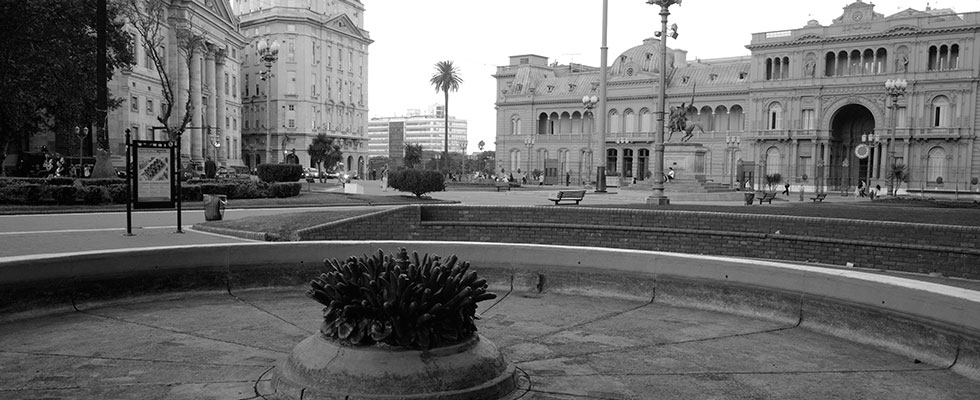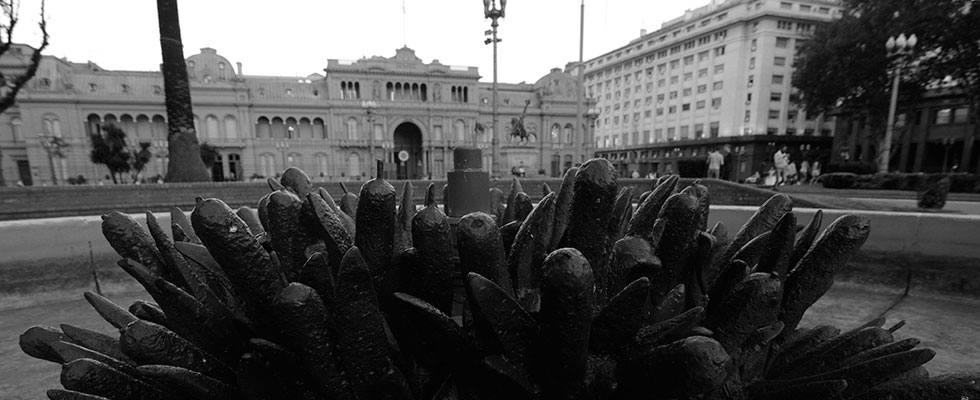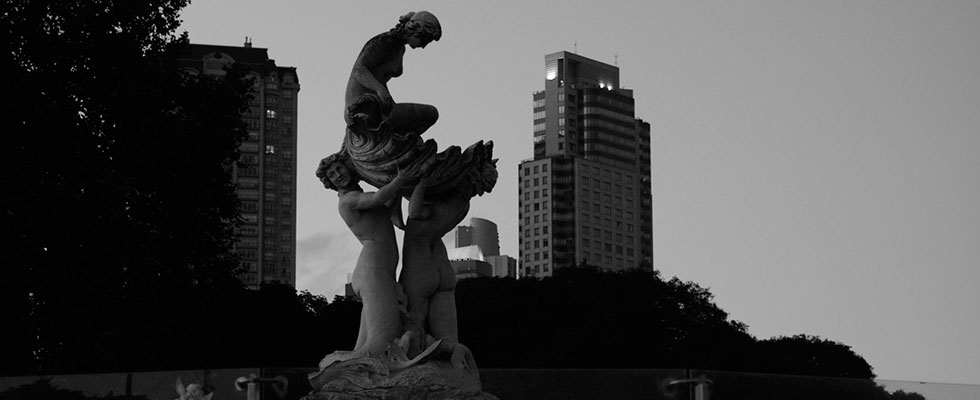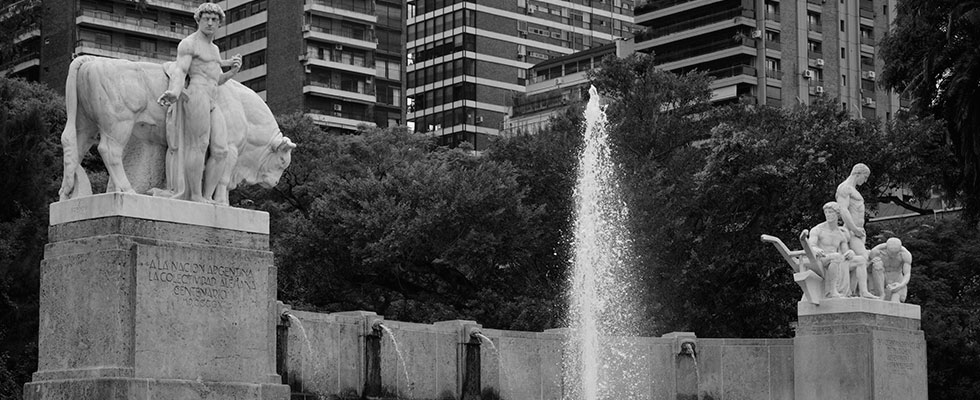Make a wish and toss the coin. The tradition might be less popular than in the past, but rusty coins still appear at the bottom of the pools around the city’s many fountains.
These fountains, along with the city’s sculptures and statues, form a rich part of Buenos Aires’ eclectic architectural legacy. Many of them have intriguing stories that have seen them moved from place to place, traversing the city. Some were abandoned for a time only to return with new life to recover their original majesty; some that caused scandal in their day are now revered as major works of art.
In total there are 126 public fountains in the city, expressing the duality of the solid and permanent base of sculpture combined with the fluidity and movement of water. Here are some of the highlights to look out for.
Agricultural riches
Where? Plaza Alemania
Two groups of sculptures form part of a 25m long monument framing the fountain in Plaza Alemania. On represents agriculture and the other livestock farming. Designed in marble and bronze, the monument was a gift from the city’s German community to celebrate the centenary of Argentina’s May Revolution . The piece was inaugurated in 1918, 8 years after the foundation stone was placed. From the sketches submitted by 122 artists, the winning submission was that of the German Gustav Adolf Bredow, who, it is said, travelled to Greece to choose the blocks of marble in person from Pentelicus.
The two fountains
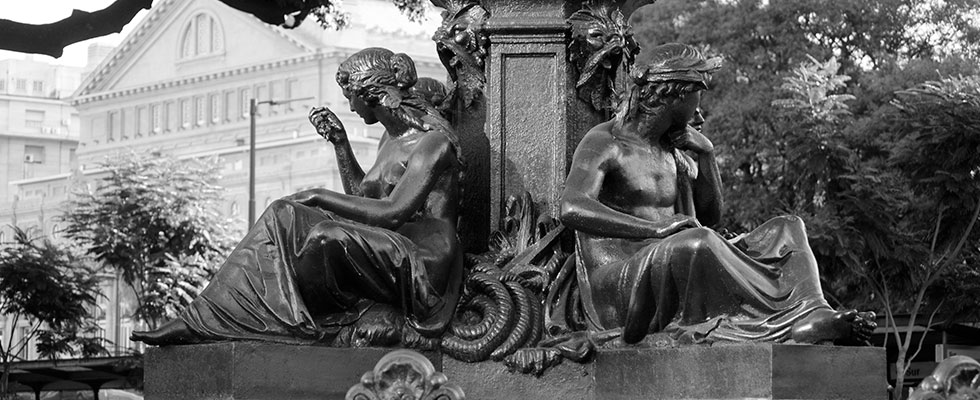
Where? Intersection of Av. 9 de Julio and Córdoba
The city had fountains before it even had water! Back in 1870 the simply named Ornamental Fountains I and II, were located in Plaza de Mayo on either side of the May Pyramid, but the fountains were dry because at the time the city still didn’t have a running water supply. The fountains were later separated and then brought together again at their new location. The pieces were commissioned from the French foundry Val D’Osne, which had received the gold medal at the Paris Universal Expo in 1867.
The waterseller and his twin
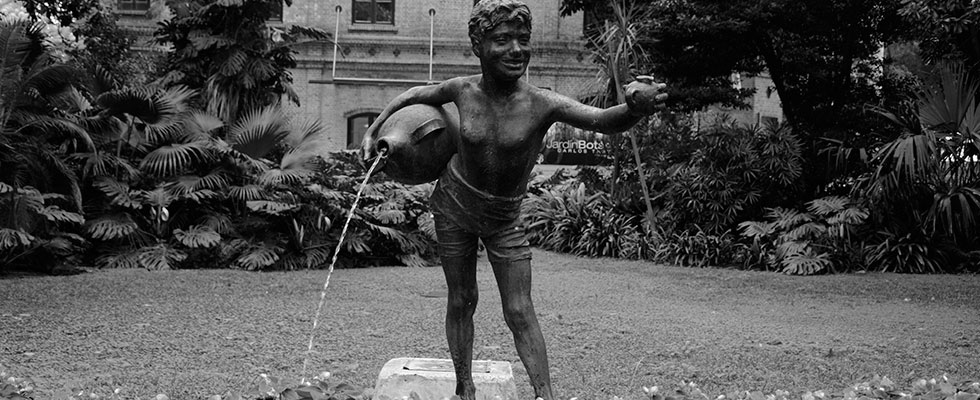
Where? The Botanical Garden
A young boy offers water to passerby in this city park. L’Acquaiolo, or waterseller, is a bronze fountain create by the Italian artist Vincenzo Gemito. A previous almost identical version of the piece but featuring the child wearing underwear had been given as a gift to the king of Naples, Francesco II. The fountain was originally placed in Plaza San Martín but was moved to the Botanical Garden in 1988 so that it would be safer. There remains a replica of the piece in its original location.
The fountain that caused a scandal
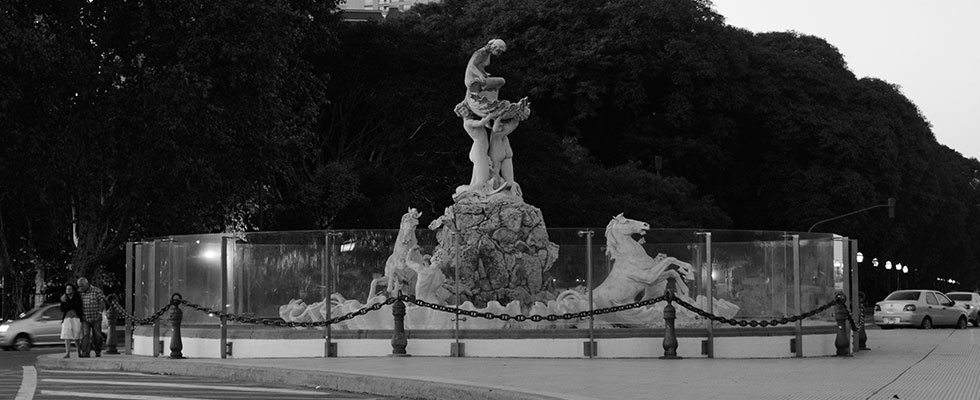
Where? Intersection of Av. Dr. Tristán Achával Rodríguez and Padre M. L. Migone, Southern riverside
Lola Mora was one of the most important sculptors of her time, and also one of the most controversial, both for the fact that she was a woman, and for her sensuous sculptures themselves. The Nereids fountain, depicting the sea nymphs of Greek myth attending the birth of Venus, was constructed in Italy in 1903 and brought to Buenos Aires. Scandal surrounded it from the start – Mora wore trousers to climb scaffolding around the stone while working in it, leading to a screen being built so that no one could catch a glimpse of a woman in such scandalous attire. The sculpture itself was originally intended as a replacement for the May Pyramid in front of the Casa Rosada but once politicians saw the finished piece with naked nymphs it was decided that such a public location wouldn’t do and it was instead placed behind the Casa Rosada in Parque Colón. All the same, not a single woman attended the inauguration, and after a time the piece was moved to its current location in Puerto Madero, in what was then a quiet, remote area. The piece has since been reappraised, being declared national historical heritage, while the neighbourhood around has become one of the most affluent in the city.
The mystery decorative fountain
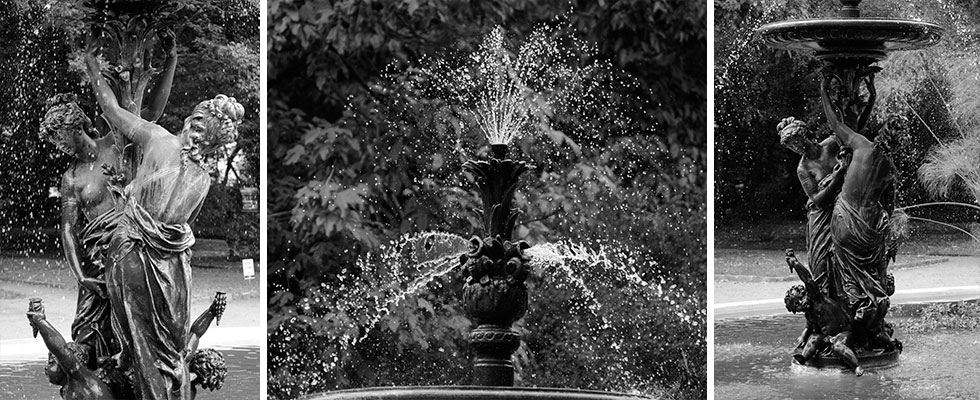
Where? Botanical Garden
Another gem in the Botanical Garden, which as well as boasting more than 5,500 species of flora, also contains 25 works of art spread over its almost 70,000m2. One of them is the simply named Decorative Fountain which shows two children in an embrace around a centre point. No records remain as to the origins of this fountain, which is one of the most attractive in the city, so it has become something of a mystery amid the foliage of the park.
The Little Angels
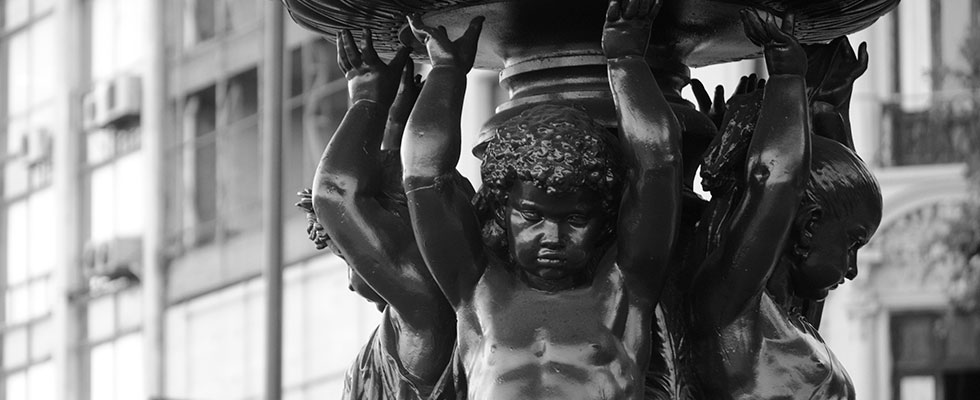
Where? Intersection of Av. Rivadavia and Rincón
What remains today of the fountain Los Angelitos, the Little Angels, is only the upper part of a larger fountain that originally measured 12 metres and included two figures of Neptune, Naiads, children, masks, volutes and cartouches. The original structure was dismantled in 1920 in order to place a monument to Christopher Colombus in its place (behind the Casa Rosada in Parque Colón) and the upper part was moved to its current location. Other sections of the fountain were spread throughout the city, but mistakes were made when they were reassembled resulting in differences from the original composition. The piece was constructed in France by Mathurin Moreau and Paul Liénard at Val D’Osne foundry in 1870.
Neptune
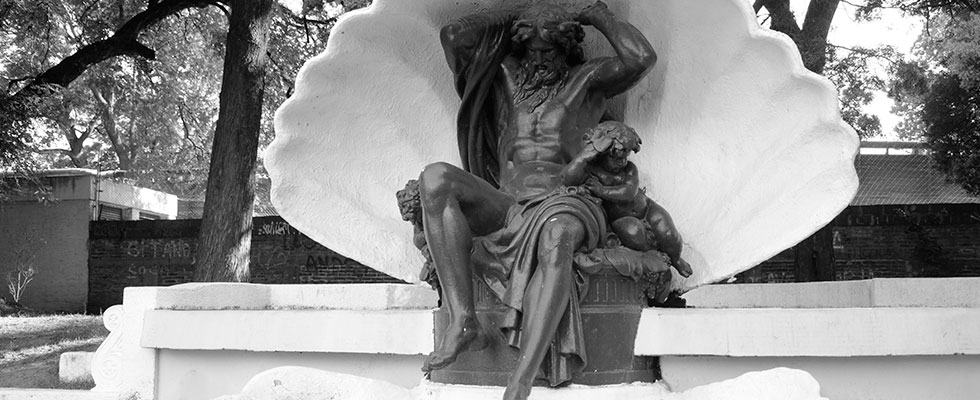
Where? Av. Figueroa Alcorta and Dorrego
Another piece from that monumental fountain originally located behind the Casa Rosada can be found at the intersection of Figueroa Alcorta and Dorrego in the parks of Palermo. In this case, it’s one of the figures of Neptune (there were two in the original sculpture, one old and one young), in a shell.
(Select magazine of Santander Río | Fotos: Marko Vombergar)

